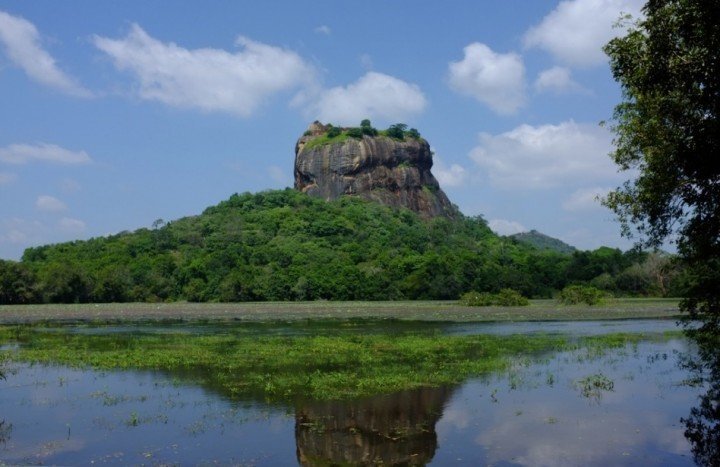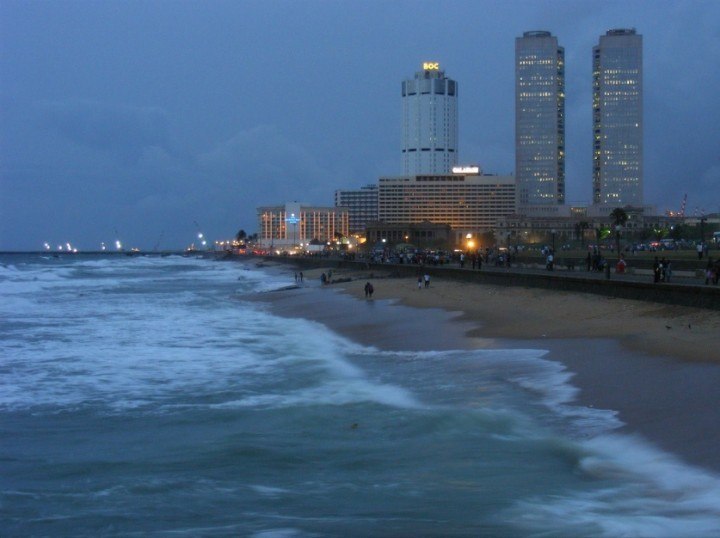Clik here to view.

Sigiriya, Sri Lanka
When you visit Sri Lanka, it’s hard to imagine that the beautiful, teardrop-shaped island was once the ground of one of the bloodiest civil wars in history. Two ethnic groups – the majority Sinhalese and the minority Tamil – were engaged in a bitter war that claimed the lives of an estimated 100,000 people in thirty years.
Since the war ended in 2009, however, the country has seen massive change. Sri Lanka is now ranked 73rd in the world on the Human Development Index, higher than India at 135 and China at 91. Among the people of the island, this change has manifested itself in many different ways.
“I studied political science and did my masters in international relations,” says Lahiru Pathmalal, co-founder of Takas.lk, one of Sri Lanka’s largest ecommerce sites. Although Lahiru worked with NGOs and different conflict resolution organizations, he did not feel the dynamism necessary to change the face of the country. “It was all government work all over again,” he explains.
Takas.lk was founded in 2012 by Lahiru, Dilendra Wimalasekere, and Murtaza Moosajee. Its latest round of funding was US$500,000 led by local investors. Other competition in the sector includes Wow.lk, an ecommerce site that recently entered the ticketing space for Sri Lanka’s cricket team and expanded its site to read in Tamil, Sinhala, and English. Ikman.lk is a popular classifieds site that connects sellers and buyers all over Sri Lanka. Despite the growing presence of ecommerce, however, it is still in its very early stages.Image may be NSFW.
Clik here to view.
“Our most difficult challenge has been raising money,” Lahiru says. “It’s hard to show a proof of concept. How do you explain to people that ecommerce is here to stay? It is changing ever so slowly, but people are still critical of the entire framework of the country.”
While it’s not always easy to compare countries – especially two that are so vastly different in size, geography, and climate – Sri Lanka and India do have a lot of similarities. “We’ve implemented a few similar techniques for our buyers,” explains Lahiru. “We were the first site to offer cash on delivery services here, as well as tie-up with certain banks to allow people to pay directly from their accounts.”
A large part of Sri Lanka’s population is already online. “We have 5 million out of 20 million people on the internet,” says Lahiru. “There are 4G colonies across the country and Google’s balloon project promises to get internet to every corner of the country in the next few years.”
Most products sold on the site are electronics goods and the concept of inventory stocking is still novel to Sri Lankan ecommerce. “We stock with the guarantee that we will sell our products within three days,” explains Lahiru. “We ship our things out immediately.” After a product reaches their site in the island’s capital, Colombo, Takas.lk’s internal logistics team handles the rest. “The only part we’ve outsourced is the last mile,” says Lahiru.
Investment in Sri Lanka is increasing
Clik here to view.

Colombo, the capital city of Sri Lanka
Despite Lahiru’s difficulties in raising money, the interest in Sri Lanka is starting to rise. Asia’s biggest economies have been looking at the island as a possibility. Its largest trading partners are India and China, in that order. The Chinese government was lending up to US$490 million to the country in 2012, with a 50-fold increase in the past decade.
When I spoke to Prajeeth Balasubramaniam, founder of the Lankan Angel Network and an investor in Takas.lk, he had just finished something that he called an “empowerment program hackathon.”
“We hold entrepreneurship programs around the country,” he said. “This one was in northern Sri Lanka, where much of the war happened. 80 percent of the startups were tech-related, and each year we fund one to two entrepreneurs. After that, we put them into an incubation and mentoring program.”
The Lankan Angel Network is an alliance of angel investors with 75 members, including the vice president of Google Southeast Asia and India, Rajan Anandan, and the president of the Indian Angel Network, Padmaja Ruparel. They’ve also funded companies like the Lanka BPO Academy, a higher education training academy in the IT and BPO (business process outsourcing) services, and Nithyarn, an online store for hand-woven, traditionally inspired products.
For Prajeeth, his investments are not focused on creating lifelong entrepreneurs. “We select entrepreneurs with the idea that they will be doing something else in five years,” he explains. “The ecosystem here is very young and we’re trying to make it grow. We have a finance team inside our incubation center that helps them project how to financially leave their company.”
The worst fear of an entrepreneur in an early ecosystem, Prajeeth says, is that the hard work people put into their ideas might be worthless when they are stolen and replicated. “It sounds ridiculous, but in the early stages of a startup ecosystem these things happen,” he says. “We’re trying to build trust. We’ve started the Venture Engine, an initiative where startups can find interested angel investors. It’s all about building an ecosystem where people can feel safe.”
What else can Sri Lanka do to promote its startup ecosystem?
This post 6 years after a bloody civil war, Sri Lanka bets on startups, attracts investors appeared first on Tech in Asia.